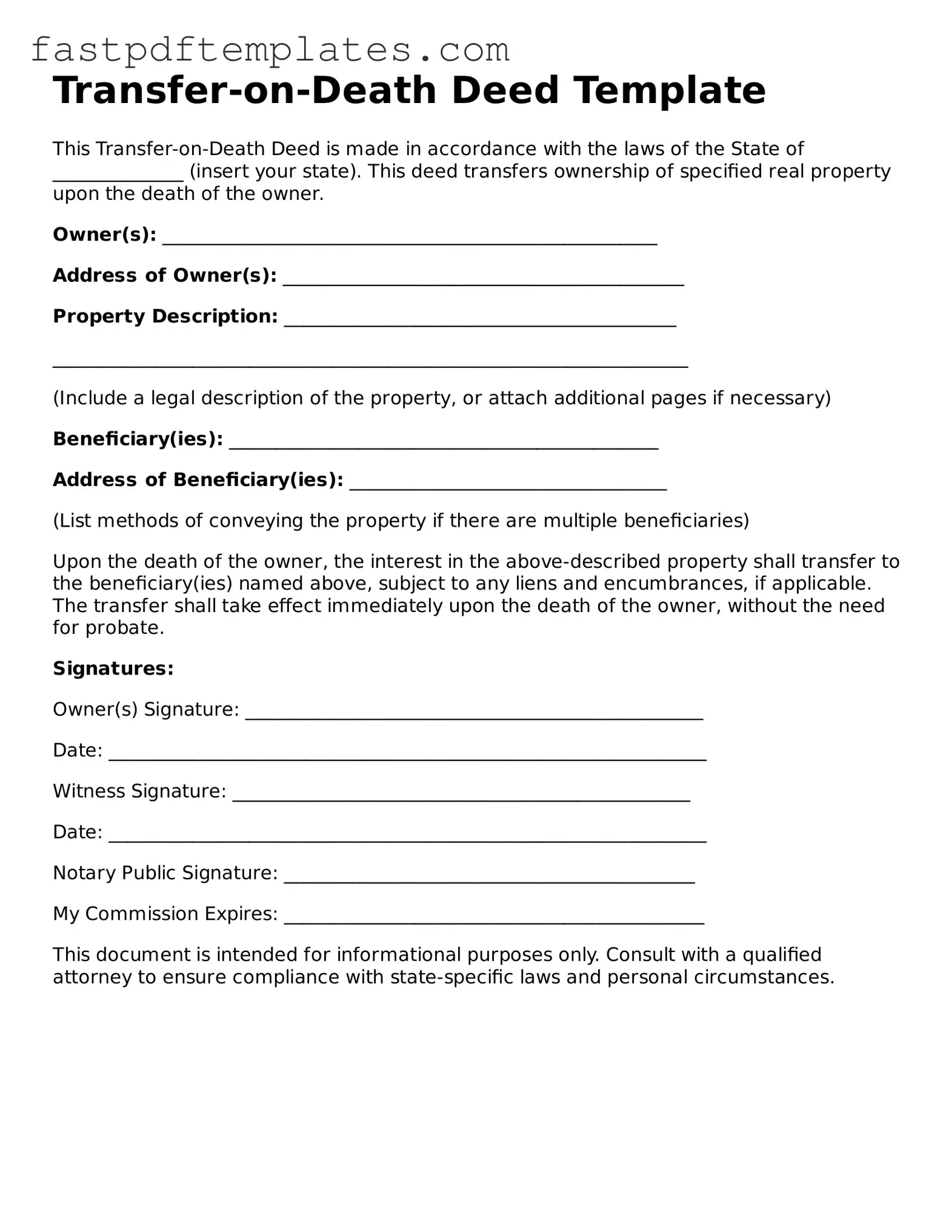Transfer-on-Death Deed Template
This Transfer-on-Death Deed is made in accordance with the laws of the State of ______________ (insert your state). This deed transfers ownership of specified real property upon the death of the owner.
Owner(s): _____________________________________________________
Address of Owner(s): ___________________________________________
Property Description: __________________________________________
____________________________________________________________________
(Include a legal description of the property, or attach additional pages if necessary)
Beneficiary(ies): ______________________________________________
Address of Beneficiary(ies): __________________________________
(List methods of conveying the property if there are multiple beneficiaries)
Upon the death of the owner, the interest in the above-described property shall transfer to the beneficiary(ies) named above, subject to any liens and encumbrances, if applicable. The transfer shall take effect immediately upon the death of the owner, without the need for probate.
Signatures:
Owner(s) Signature: _________________________________________________
Date: ________________________________________________________________
Witness Signature: _________________________________________________
Date: ________________________________________________________________
Notary Public Signature: ____________________________________________
My Commission Expires: _____________________________________________
This document is intended for informational purposes only. Consult with a qualified attorney to ensure compliance with state-specific laws and personal circumstances.
